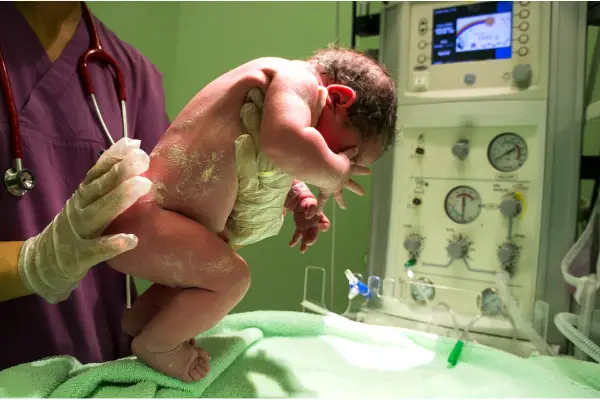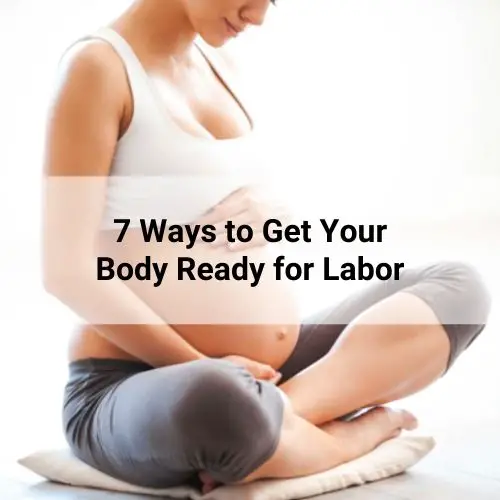You are almost there!! No false labor for you! You’re actually having a baby. You have made it through the first stage of labor and now you are ready to move on to the second stage! Since your cervix is fully dilated, your baby will have more space to pass through. It is now time to push your baby down through the birth canal and out into the world.
Table of Contents
Stage two
Stage 2 of labor lasts for about 20 minutes to 2 hours. The duration of this stage depends on the position and the size of your baby. A bigger baby might take a longer time to go move through the birth canal. Babies whose are positioned facing up towards the abdomen of their mothers will have a hard time passing through as they require more pushing from the mother.
Contractions are so much more frequent and happens for about 45 to 90 seconds with intervals of 3-5 minutes rest. So, maximize the rest in between and regain some of that energy because you will need it during the progression of the labor.
Contractions
Contractions are the most vital instruments in making the second stage successful. Making use of the contractions will make the process a whole lot easier, but not pushing during contractions may prolong labor and may cause your baby to be in distress.
Here’s how you should push when your cervix is fully dilated, and contractions began to be more often than before:
o Use gravity to your advantage and get into a pushing position.
o Relax your pelvic floor and anal area.
o Take 2 deep breaths as the contraction starts and push down. You’ll know it is the peak of the contraction when your abdomen is as hard as when you touch your forehead.
o Push as if you are having a bowel movement. It is more effective if you act as though you are having the biggest bowel movement of your life and give it all your focus.
o Some moms find it helpful when they tuck their chin into their chest as, it almost makes the pushing feel more effective.
o Take another breath when you need to and give several more pushes before the contraction is gone.
o Also, always listen to the nurse, doctor or any practitioner who is guiding you and stop when you are told to do so. They know when is the best time to push and when it’s time for you to rest.
o Make sure to rest in between contractions to build your strength for the next one.

A mirror will be helpful to know if you are making progress with pushing. If you see that your baby’s head goes in and out of the vagina, don’t worry as this process requires multiple attempts before your baby’s head finally comes out.
Your birth partner’s role
Some hospitals allow the presence of birth partners while some do not. (Just be thankful you made it to a hospital and aren’t having to give birth alone.) If you are a support person, here at the things that could help your partner in labor:
o Help her relax and be comfortable with just your presence. Your presence alone can help your partner so much!
o Ice chips are helpful for her to keep hydrated during labor – offer them in between contractions.
o Hold her hand during pushing and give verbal encouragement as it will increase her energy and confidence during labor.
o Guide her through contractions, especially when it is time to push.
o Make sure that you stay calm. Showing heightened levels of emotions may do more damage and may make your partner scared.
Your baby’s role
While you are busy timing the contractions and pushing during the peaks, your baby is also busy doing its own tasks inside to help you in bringing them out into the world:
1. The head will turn to one side and the chin will automatically rest on the chest so that the back of the head will lead the way down the birth canal.
2. As your cervix becomes fully dilated, the head leads the way and the torso begins to turn and face your back as they enter the vagina.
3. The head will start to go in and out of the vaginal opening which is known as “crowning”.
4. Once the head is out, the head and shoulders will again take a turn to face your side allowing the whole body to easily slip out.

o After passing through a narrow birth canal, your baby may have a cone-shaped head. Don’t worry though as it will resolve over time and will go back to its normal size and contour. o Expect a waxy/cheesy coating on your baby. This is called “VernixCaseosa”, it protects your baby from infections, keeps them warm and is one of the reasons why their skin is so soft. o You may also see fine downy hair all over their shoulders, back, forehead and temple. These hairs are called “Lanugo” and are helpful in warming their body as babies do not have fat stores like adults do. These hairs eventually fall out after a few days. o You may also notice tiny white bumps on your baby’s cheeks, nose and around the eyes. These are called “Milia”. They are caused by trapped dead skin inside the small pockets near the surface of the face. They are not contagious and like most other newborn’s problems, they go away on their own.Once your baby is out, breastfeeding will start immediately, and the baby will stay with you to promote bonding. Apgar score will also be taken while drying your baby and being wrapped to prevent heat loss. The required newborn vaccinations will also be given like vitamin K, BCG and hepatitis B shot. Later on, your baby will undergo newborn screening to see if he/she has congenital disorders at birth. Click here to check out this handy labor kit online.
Related Articles:

Astley Golosinda
My background is in the field of medicine and I have a Bachelors Degree in Nursing. My thesis in Nursing was also published on Journal of Gerontology
For the past 4 years, I continued my studies and dedicated my time to acquiring a Doctorate of Medicine. I was a working student all throughout my post-doctorate degree. I have clinical experience in the hospital both as a nurse and now as a medical student.





